Thinking about your next trip away? I bet you haven’t considered Ethiopia. For many people, Ethiopia generates stereotyped images of dry, arid desert and the famines of 30 years ago. What if I told you that it has: 17th century royal castles, mountainous World Heritage highlands, salt and lava-filled lowlands, significant archaeological findings, endemic wildlife and 12th century rock-hewn churches? What if I also told you that it’s a vegan paradise, and—the birthplace of coffee? Sounds interesting? Read on for my guide of vegan food in Ethiopia.



Orthodox Christianity is the dominant religion in Ethiopia. As a result, those who follow this religion (around half the population) fast for approximately 200-250 days a year. The fasting isn’t the type of fasting you might think—rather than abstaining from eating, fasting in Ethiopia means abstaining from all animal products: meat, eggs, and dairy. Fasting happens in the lead up to religious holidays (and there are many in Ethiopia!) and, every Wednesday and Friday throughout the year. It is worth noting however that outside of fasting days, vegetables are conspicuous in their absence—Ethiopians eat a lot of meat. So, if you are planning a trip to Ethiopia, I’d recommend going during a holiday—such as before Ethiopian Christmas (which is on January 7th) or during Lent. That being said, I could always find something to eat, but the choice may be limited if you are outside of the capital (Addis Ababa). Within Addis however you’ll find plenty of vegan options: make sure to visit Taitu, the oldest hotel in the city, which runs an ever-popular vegan buffet 365 days a year.
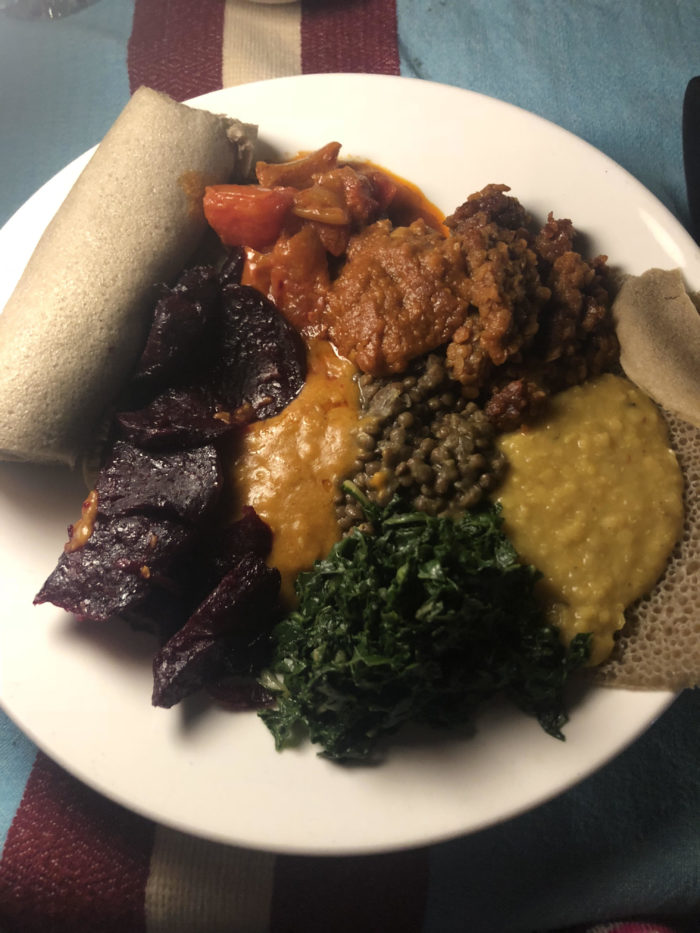
While all animal products are off the menu during fasting days, spices (such as berbere, the classic Ethiopian spice mix) are most certainly allowed. The wats (stews), curries, soups and vegetables are all delicious, and range from zero spice to super spicy (try the whole stuffed jalapeno pepper, it’s got a kick!).
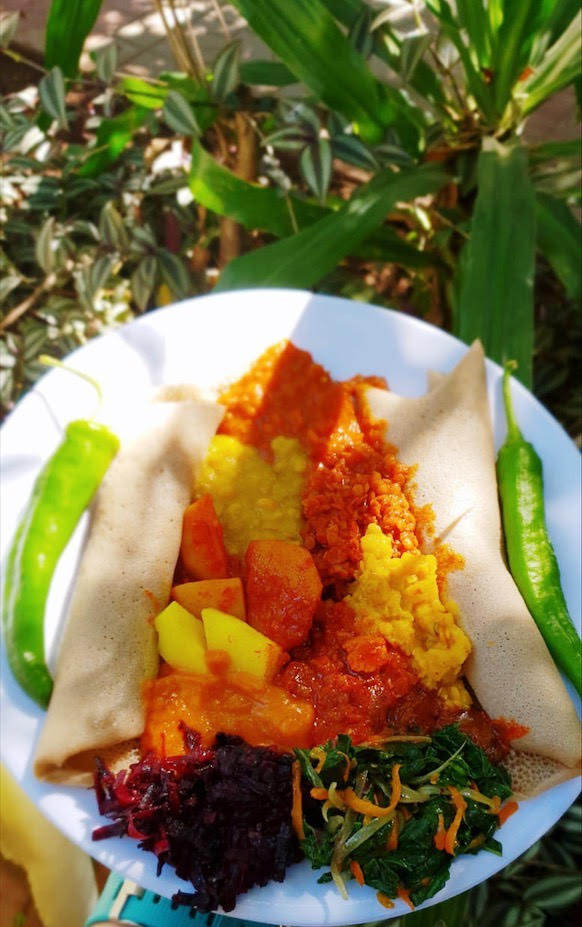
The staple ingredient you need to know first is: injera. Injera is best described as a giant sour, spongy pancake, which forms the base of the meal. The different dishes are then served on top of the pancake, alongside additional rolls of injera. You tear off pieces of injera (using your right hand only, the left hand is seen as unclean) and scoop up some of the curry. Ethiopians eat together, sharing the same plate. Injera is made from teff flour: teff is an ancient grain native to Ethiopia, which is high in iron. The batter is left overnight to ferment, and then fried like a pancake.
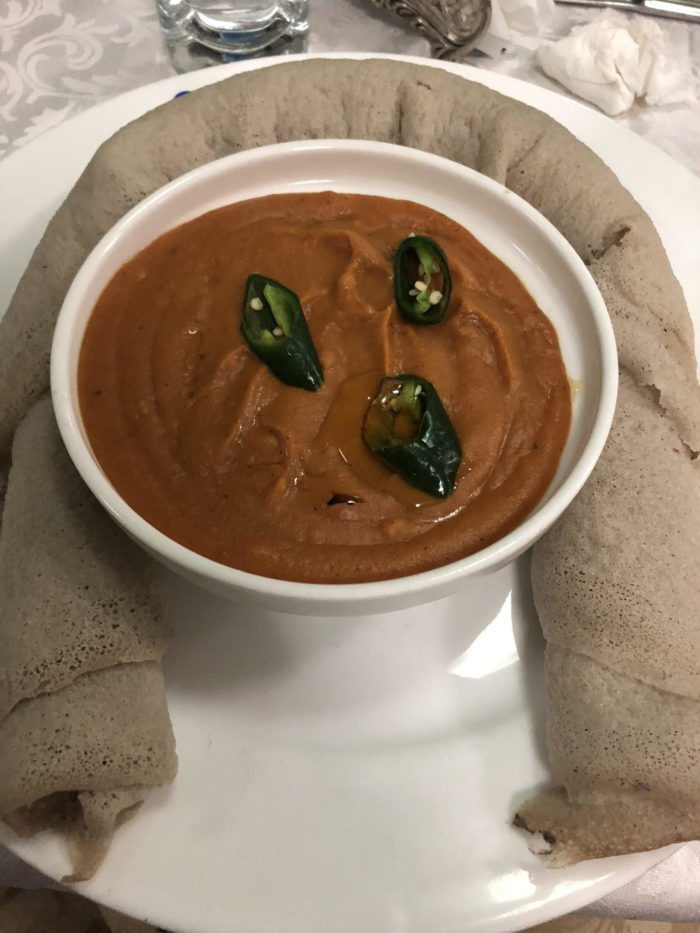
Alongside injera, the other Ethiopian food staple is shiro wat. Shiro wat is a creamy paste, made from ground chickpeas—think of it as a slightly spicy, curry-flavored hummus. Even if it’s a non-fasting day, you’ll always be able to get injera and shiro. It also comes in another form: fasting firfir, which is usually made from leftover injera, shredded and mixed with either shiro or another spicy sauce.
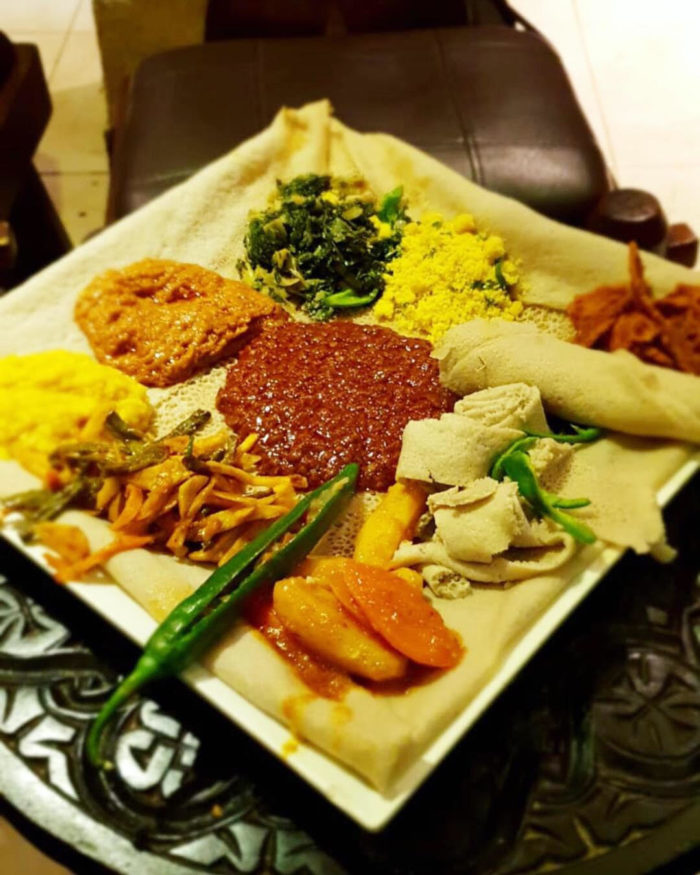
There are many other similar curries, using red lentils (misir wat), yellow split peas (kik alicha—a stew cooked with turmeric) and a whole host of other legumes. However, as a vegan, the key item on the menu that you’re going to want at every restaurant is yetsom beyaynetu. This is the pièce de résistance—the vegan tasting platter. Trust me, you won’t get bored of it—it’s slightly different in each place, and super tasty. It usually consists of shiro, a few different lentil wats, gomen (collard greens fried with garlic), and possibly some other mixed veggies (such as cabbage and carrots) and lastly either a tomato salata (a salad consisting of onion, tomato, jalapeno and lemon juice) or a beetroot salad.
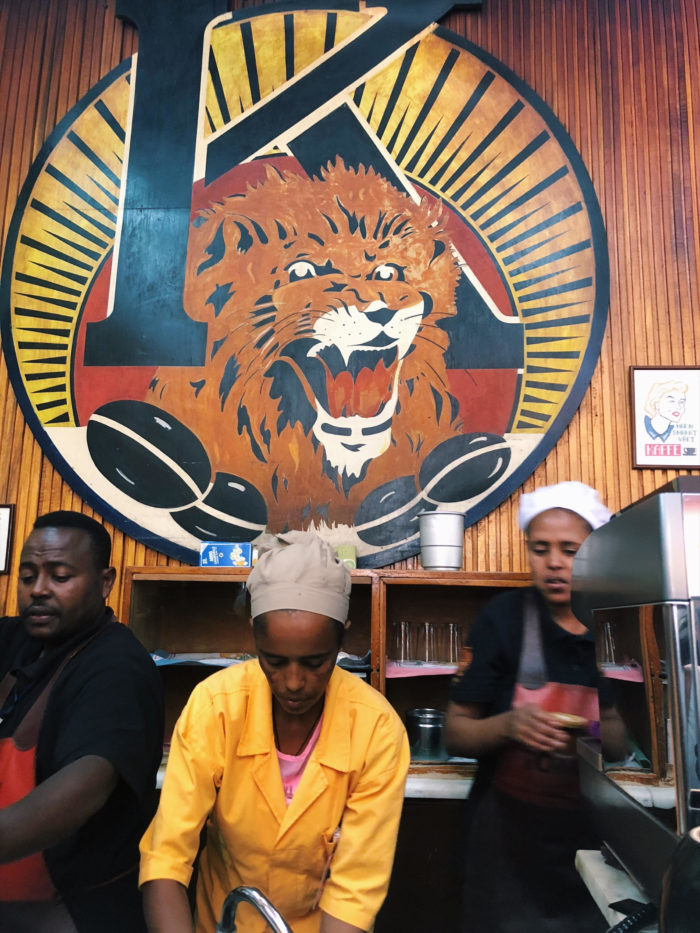
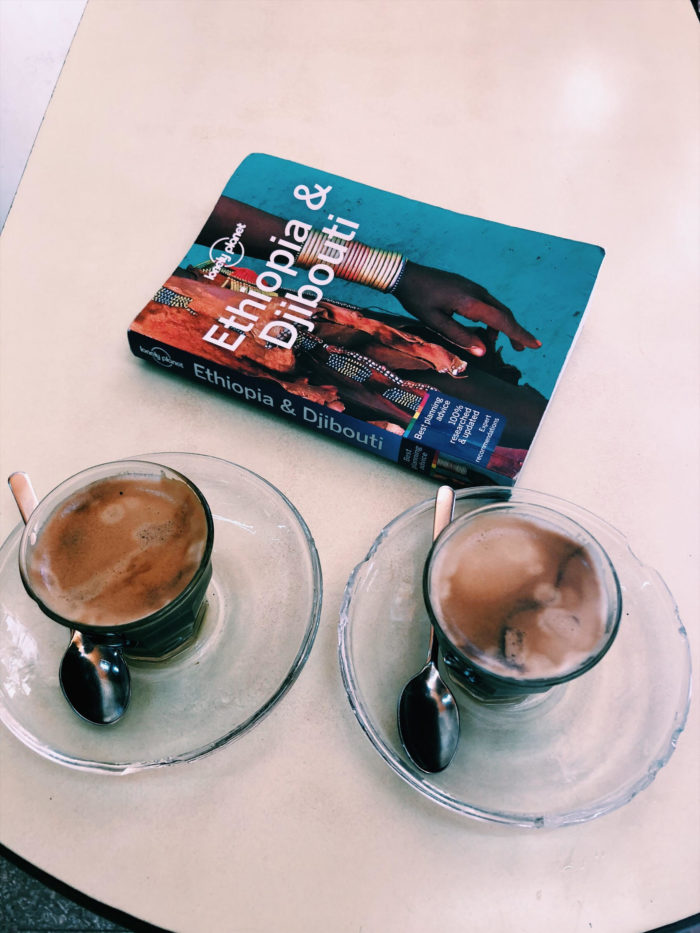
Last but not least are two drinks famous in Ethiopia: coffee and avocado juice (!). Ethiopia is known to be the birthplace of coffee, and no trip to Addis Ababa is complete without going to Tomoca, which is said to be the best coffee shop in the country. You’ll never be far from freshly roasting coffee beans in Ethiopia, and the country even has its own coffee ceremony. If you’re already full of caffeine, try an avocado juice (more of a mousse, it usually comes with a spoon). It’s just fresh avocado blended, but is sometimes mixed with other fresh tropical fruits, such as mango, papaya or watermelon.
Ethiopia is an extremely interesting country with a rich history—and sure to delight your tastebuds, too.



Also by Kirstie: Practice These 5 Moves To Build Yourself Up to A Headstand (Finally!)
500 Calorie Vegan Spicy Bean Salad (Intermittent Fasting Friendly!)
Get more like this—Subscribe to our daily inspirational newsletter for exclusive content!
__
Photo: Dr. Kirstie Fleetwood




